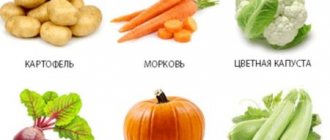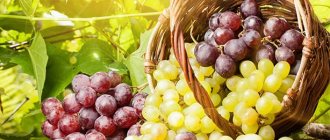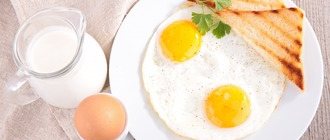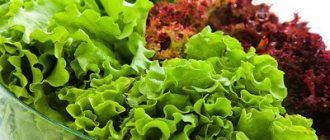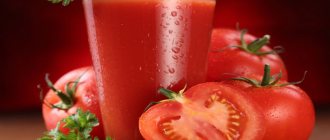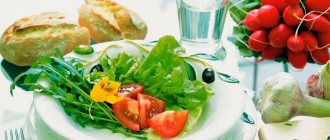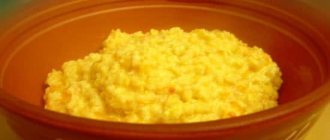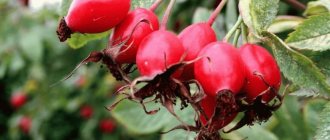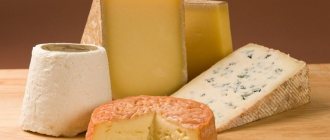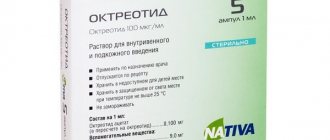The pancreas is a very small but capricious gland, and if everything is not in order with it, then a person has to abstain from many of his favorite dishes and products. In order not to lead to acute pancreatitis or exacerbation of chronic pancreatitis, you should adhere to a diet that is commonly called the 5P table.
What can you eat if you have pancreatitis? We will talk about this in this article. Let's consider the most frequently asked questions regarding prohibited and permitted foods for this disease.
What vegetables can you eat?
Tomatoes
Can you eat tomatoes if you have pancreatitis? As for tomatoes, the opinions of nutritionists are divided; some believe that they are very useful because they contain delicate fiber, which is so necessary for the gastrointestinal tract, and remove harmful cholesterol from the blood, which is very important for the pancreas.
Others believe that it is worth refraining from using them, especially during an acute process or even a mild exacerbation of chronic pancreatitis. Definitely, you should not eat unripe tomatoes, which contain a lot of toxins that burden all organs of the digestive system.
But fresh tomato juice made from ripe tomatoes (not juice from industrial bags, but squeezed from fresh tomatoes) turns out to be a very valuable product that stimulates the pancreas, especially when mixed with freshly squeezed carrot juice. You can also eat tomatoes stewed or baked. But, in everything, moderation should be observed; abuse of even healthy foods can affect the functioning of the pancreas.
Tomato juice is a choleretic, that is, choleretic. If you drink it during an exacerbation of chronic pancreatitis, then, most likely, it will be even worse, since secondary reactive pancreatitis will develop, as with cholelithiasis. Excess bile will be thrown into the common pancreatic duct, where it will activate pancreatic enzymes, which will digest not the food in the small intestine, but the gland itself. The result is acute pancreatitis, a gurney, an operating table for pancreatic necrosis, then either disability or death.
Thus, tomatoes and tomato juice are allowed in remission of chronic pancreatitis, when there is no pain, no swelling according to ultrasound, no increase in amylase, diastase, elastase and other signs of inflammation.
All recommendations in this article are indications for the 5P table for chronic pancreatitis during the recovery period after an exacerbation and outside of an exacerbation. To avoid acute pancreatitis, you should not drink alcoholic beverages (especially strong drinks) and certain medications.
cucumbers
If you have pancreatitis, can you eat cucumbers or not? Cucumbers, despite being 90% water, are actually very rich in microelements and vitamins. You can eat cucumbers for this disease; moreover, for treatment, a cucumber diet is sometimes prescribed for pancreatitis, when a person eats 7 kg of cucumbers in a week, this unloads the pancreas and prevents inflammatory processes in it. Again, let's talk about the fact that everything is useful in moderation; with excessive consumption of cucumbers, especially if they contain nitrates or, even worse, pesticides, the benefits are reduced to zero.
Cabbage
Is it possible to eat cabbage and broccoli if you have pancreatitis? Cauliflower, broccoli, Chinese cabbage can be eaten, but it is better stewed or boiled. Regular white cabbage, which we are most familiar with, has very tough fiber, so it is prohibited to eat it raw, but after heat treatment, it is not often possible to eat it either. And of course, don’t forget that you should avoid fried vegetables. And it is better to avoid sauerkraut, as it greatly irritates the mucous membranes. Peking cabbage can sometimes be eaten raw, but any type of cabbage should be introduced into the diet after an exacerbation with caution.
Is sea kale healthy? The answer from nutritionists is yes, it is the healthiest of all types, since it contains a very large amount of cobalt and nickel, without which the normal functioning of the gland is impossible. Is it possible to eat seaweed if you have pancreatitis? Yes, ... only to residents of Southeast Asia (Japan), since the enzymatic systems there are different from European ones. Even on medicines in pharmacies in Japan they indicate that they may not help Europeans. Therefore, you should not eat seaweed during pancreatitis, especially during exacerbation. This is not like other types of cabbage, this product is closer to mushrooms, that is, its utilization will require a massive release of pancreatic enzymes, which will cause worsening inflammation. Therefore, seaweed, like mushrooms, is not given to children under 12 years of age (they do not have the appropriate enzymes) and they are contraindicated for pancreatitis.
Transition to normal diet
If your stomach can cope with the food you eat, you can gradually add butter, milk and spices to the prepared dishes.
But this should be done carefully and not overdo it. After the remission stage has become stable and your health has stabilized, you can gradually introduce raw vegetables into your diet
But it should be remembered that all products must be finely grated, the skin must first be removed, and the seeds must be removed. Adding spices for pancreatitis is allowed, but within reasonable limits.
When switching to a normal diet, it is recommended to drink potato juice
Drinking freshly squeezed potato juice is considered beneficial. In this case, root crops must be selected only when they are mature and without signs of damage. A mixture with carrot juice is considered more effective, since carrots have properties that heal wounds and soothe the digestive system.
Salads made from fresh seaweed, seaweed, carrots with the addition of olive oil or low-percentage sour cream will also be useful. They are rich in vitamins and microelements and should become a regular dish in the diet. But cabbage cannot be eaten raw.
It is important to select vegetables only of good quality, ripe, without damage. .
The use of spices for pancreatitis is allowed in minimal quantities
The use of spices for pancreatitis is allowed in minimal quantities
Thus, several important rules can be identified:
- vegetables are introduced into the diet only after the acute period of the disease has passed;
- steaming, boiled or stewed is allowed;
- It is recommended to eat small and homogeneous portions of food;
- Salt and other spices should be limited.
To prevent attacks of pancreatitis from bothering you, you need to develop the right diet, lead a healthy lifestyle, give up bad habits and conduct a timely medical examination. Only by following these measures can you return to a full life.
You will learn more about nutrition for pancreatitis from the video:
https://youtu.be/R15mv5szCs0
″>
What fruits can you have for pancreatitis?
It is not advisable to consume all sour fruits, especially those with coarse fiber, especially during exacerbations. You can eat fruit only 10 days after the start of remission of pancreatitis. In case of chronic pancreatitis, you should also not abuse various fruits; it is enough to eat 1 of the allowed fruits per day. Of course, in terms of the content of nutrients, vitamins and minerals, they have no equal and this is why they are useful for the gland, but the presence of coarse fiber harms its functioning:
- You can eat: strawberries, sweet green apples, papaya, pineapples, avocados, watermelons
- You cannot eat: pears, all types of citrus fruits, sour apples, peaches, plums, cherry plums, mangoes
- During remission, experiments with eating various fruits are allowed, provided they are heat treated - in a double boiler, oven.
There are certain rules when and how to eat fruits with pancreatitis:
- Allowed fruits should be chopped, ground, and crushed as thoroughly as possible.
- Best consumed after baking in the oven or steamer
- You should not eat more than one fruit per day
- You should know exactly the list of permitted and prohibited fruits and know the medications that should be taken if you accidentally eat an unwanted fruit.
Is it possible to eat strawberries and bananas with pancreatitis and why? Most nutritionists believe that the pancreas, without exacerbation of pancreatitis, is able to cope with strawberries in small quantities, but everything is individual. It is better to avoid eating bananas.
Is it possible to drink alcohol if you have pancreatitis?
The pancreas categorically rejects any alcoholic beverages. Of all the organs of the gastrointestinal tract, this gland is most susceptible to the toxic effects of alcohol. Unlike the liver, it does not have an enzyme capable of breaking down alcohol. It is known that more than 40% of all cases of acute pancreatitis occur after heavy drinking, fatty snacks, or a cheerful long feast.
In chronic pancreatitis, when drinking alcohol, there is a high risk of repeated attacks of acute pancreatitis, which lead to serious functional, anatomical destruction of the pancreas. And as you know, unlike the liver, this gland is not completely restored. And with each intake of alcohol, the formation of foci of fibrosis progresses, which essentially means that the pancreas does not just become inflamed, but rots.
Recipes from allowed fruits
Ingredients are based on two servings. You are allowed to eat these dishes up to 2-3 times a week, little by little. During an exacerbation, they are temporarily excluded from the diet.
Smoothie
Ingredients:
- 7-10 small cubes of fresh pineapple,
- 2 medium ripe kiwis
- ½ teaspoon honey.
Peel the kiwi and pineapple and chop into cubes, place in a blender bowl. Add honey and stir thoroughly. Pour into drinking glasses and place straws in them.
The second option is to chop the kiwi and pineapple separately, add equal parts of honey to each. Pour the green mixture into the glass first, then the yellow one. The result is a beautiful two-color drink.
Apple baked with cinnamon
Compound:
- 2 large sweet apples,
- ½ teaspoon cinnamon,
- ½ teaspoon of natural liquid honey.
Rinse the apples thoroughly in running water and dry with paper towels. Place the apple with its tail up and roughly mark the midline, cut into two halves.
Place a quarter spoon of honey in the center of each apple and cover with the top halves. Sprinkle cinnamon on top. Bake in a well-heated oven at 200 degrees for about 25 minutes.
If you want to achieve greater softness, you can leave the fruit in the oven for another 5-7 minutes.
Fruit jelly
Have to take:
- 2 bananas
- 1 tsp agar-agar,
- ½ tsp. vanillin,
- 200 ml purified water.
Pre-prepare agar-agar by soaking it in cold water for one hour. Pour the gelling mixture into a ladle or small saucepan and bring to a boil. Reduce heat and cook for 20 seconds, stirring continuously.
Remove from heat, pour into mold and cool slightly. Grind the bananas using a blender until pureed. Stirring all the time, pour it into the agar mass, add vanillin. Place in the refrigerator and wait until completely frozen.
Other recipes
Outside of periods of exacerbation of pancreatitis, fruits from the permitted list can be added not only to desserts, but also to main dishes. The flavors of chicken fillet and fresh pineapple combine especially well. And avocado, which is useful for pancreatitis, can become the basis of a delicious salad.
Chicken with pineapples - light recipe:
- 300 g chicken fillet,
- 100 g pineapple cubes,
- ½ teaspoon honey,
- a pinch of salt.
Pre-boil the chicken fillet, cool slightly and chop into thin strips. Place meat sticks and pineapples in a deep frying pan, salt and sprinkle with honey (it is better to choose liquid, which will be easy to distribute).
Add boiling water to a height of 2-3 mm from the bottom of the pan. Cover with a lid and simmer briefly over moderate heat. You should not keep the meat in the pan for too long so that it does not fry.
In the classic recipe, 20 g of butter is added to the frying pan before stewing, but if you have pancreatitis, it is better to avoid this ingredient.
Summer salad with avocado:
- 1 large fresh cucumber,
- 1 medium sized avocado
- a pinch of salt,
- 5-7 ml vegetable oil (olive or sunflower),
- a pinch of Indian sesame,
- 2-3 sprigs of parsley and dill.
Peel the avocado and carefully chop into small cubes. Cut the cucumber lengthwise into two halves and then into thin strips. Grind the strips into thin, tender strips. Place the prepared products in a salad bowl.
Sprinkle with sesame seeds, salt, add oil and garnish with finely chopped herbs. One small sprig of parsley can be left to decorate the salad, placed on top.
So, what should you not eat if you have pancreatitis?
Fatty food
The pancreas really does not like fatty foods, smoked foods, foods with a high protein or fat content.
- Meat. Therefore, fatty meats (pork, duck, goose), especially kebabs made from them, cutlets, sausages, stewed meat and canned food should be excluded.
- Fish. Fatty fish - sturgeon, salmon, trout, salmon, herring, sprat, mackerel, catfish, as well as caviar and canned fish, salted and smoked fish are also excluded from the diet.
- Broths . According to gastroenterologists, it is difficult to find a more harmful product for the pancreas than rich bone broth, aspic. And many people try to bring strong chicken broth to the hospital to improve their health. This is a big mistake!
Products containing artificial colors, flavors, preservatives
They also do not spare the pancreas. On the shelves of our supermarkets there are practically no products without the chemical additives listed above, so recently the number of patients with pancreatitis to varying degrees of severity has been steadily growing. It becomes especially scary for children, because they also consume large quantities of harmful chemical products called “children’s yogurt” (stuffed with preservatives, flavorings and flavor enhancers), children’s smoked sausage, “children’s sausages” - by definition there cannot be any children’s sausages, Children should not eat such foods at all!!! And then we wonder why a 10-year-old child has pancreatitis?
Dairy
Glazed cheese curds, fatty varieties of cottage cheese, cheeses, especially smoked and salted ones, should not be consumed. Ice cream is also contraindicated, especially since recently it has been made not from natural butter, milk and cream, but from palm oil, dry cream and milk, which go through several stages of chemical processes, which makes it very difficult for the gland when such products enter the body. organism.
Beverages
As for drinks, the pancreas really does not like soda, lemonade, which causes bloating and is usually saturated with all possible dyes, sweeteners, flavors and even preservatives. As for coffee and cocoa, these are also prohibited drinks, especially on an empty stomach. Strongly brewed tea and bread kvass are also harmful to the capricious gland. Many manufacturers of soluble chicory claim that this drink is almost a panacea and can be drunk for gastritis, pancreatitis, and cholecystitis. In terms of its effect on the gastrointestinal tract, soluble chicory is as harmful as coffee, therefore, when following a diet for pancreatitis, it should be excluded or consumed only in very rare cases, not on an empty stomach, listening to your feelings, if there is the slightest discomfort after consuming it, you should discard it it completely (more about the dangers and benefits of chicory).
- Confectionery products - sweets, baked goods, chocolate - greatly strain the pancreas.
- Eggs. Hard-boiled eggs or fried eggs are contraindicated.
- Vegetables. Coarse, hard and spicy vegetables such as radish, garlic, horseradish, lettuce, sorrel, mushrooms, legumes, bell peppers, onions (raw) cannot be eaten in any form. The remaining vegetables are very necessary, but only in boiled or steamed form.
- Fast food. Such food is dangerous even for a completely healthy person, and if we are talking about pancreatitis, then there are practically “poisonous” finished products - this is a direct path to a hospital bed.
- Fruits. There are also restrictions here; they cannot be eaten raw, especially sour ones (citrus fruits, cranberries) and too sweet ones - grapes, figs, persimmons.
Contraindicated fruits
lemon and pomegranate
There are also fruits and vegetables that are strictly forbidden to be consumed if you have pancreatitis. The most dangerous are those with a high content of sugar and acid, because they most irritate the inflamed gland. It is strictly forbidden to consume green fruits, which contain a huge amount of fiber. It is better to remove from the diet those foods that cause diarrhea or, conversely, have astringent properties.
cherry and cranberry
The most dangerous were and will be:
- number 1 – lemon and pomegranate;
- also cranberries, cherries and sea buckthorn;
- Quince, kiwi and grapefruit are considered no less dangerous.
Despite the high content of important and necessary vitamins, the following are considered undesirable for pancreatic disease at any stage:
pear
Pears. It would seem that they are less sour than apples, why are they so dangerous? The pear contains a large number of sclereids (stony cells) due to which the normal digestion process is disrupted. Therefore, even sweet and soft pears are not recommended for patients. If the doctor allows it, then during the period of remission we include pears in our dishes. Dried fruits are perfect for compote.
Absolutely all citrus fruits. Tangerines, lemons, and grapefruits, even in small portions, are very harmful to the inflamed organ. The doctor allows small portions during the period of remission, but when consuming them, you should carefully monitor the body’s reaction.
grape
Grape. The fruits, much loved by many, were also banned. Due to its high glucose content, it is not recommended for use by patients with inflammation of the pancreas. Grapes impair digestion and contribute to the development of diabetes. If you eat a dozen ripe berries a day, then only without seeds and during a period of prolonged remission.
Mango - doctors forbid consuming this juicy sweet fruit even when the pancreas has not made itself felt for a long time.
Pancreatitis is not a death sentence. With the right approach to nutrition, it may not manifest itself for a long time. The main thing is to follow simple rules and recommendations.
Proper nutrition - what can you eat if you have pancreatitis?
Everyone knows that the pancreas, during an exacerbation, loves HUNGER, COLD and PEACE. And outside of an exacerbation, it is very important how much, how often, when and what a person suffering from pancreatitis eats.
It is very important to follow certain rules and diet, the most important thing is to eat small amounts of food, quite often, preferably every 3 hours, limit food intake at night and, of course, not eat certain types of foods.
Compliance with these rules is the key to long-term remission and a full life with pancreatitis. What can you eat with pancreatitis without harming this small organ?
- Vegetables: as we said, cucumbers in the form of puree, tomatoes, preferably in the form of juice, broccoli, cauliflower, potatoes, carrots, zucchini, beets, green peas are useful - only baked or boiled. It is very convenient and healthy to make vegetable casseroles or vegetarian soups. White cabbage should be limited and eaten only in boiled or stewed form.
- Fruits: strawberries, sweet apples, pineapples, avocados in the form of compote, jelly, it is especially good to make fruit purees from apricots, and you can eat no more than 1 piece of watermelon or melon.
- Milk: Many people don’t know if milk is ok for pancreatitis? It is not recommended to consume milk in its pure form, since its breakdown requires enzymes, which are not enough for pancreatitis; after 14 years, no one should drink milk in its pure form, except rarely and separately from other products. In diseases of the pancreas, whole milk can cause both diarrhea and flatulence. Among dairy products, kefir, yogurt, and other liquid fermented milk products are considered the most ideal. You can also eat cottage cheese, but up to 9% fat content. It is very convenient and quick to make various casseroles and lazy dumplings from cottage cheese. Sour cream and fatty, sharp hard cheeses are excluded, so only cheeses such as Gouda, Adyghe, mozzarella, and Russian remain.
- Meat: with meat products everything is clear - no fat, therefore, all that remains is lean veal, chicken (without skin), turkey, boiled rabbit meat, you can also make soup with meatballs, soufflé and steam cutlets.
- Eggs: No more than 2 eggs per week and only soft-boiled, it is very difficult for the pancreas to handle the yolk, so it is better to eat only the white.
- Porridge, cereals, pasta: This is the most dietary food. Oatmeal, buckwheat, semolina and rice porridge are healthy. Barley and millet are excluded as cereals that are very difficult to digest. Pasta can also be eaten for pancreatitis, with the addition of a small amount of sunflower or butter.
- Fish: Also, the fish should not be fatty, boiled or baked; you can make steamed cutlets. Pike perch, pollock, cod, and pike are very useful.
- Bread: Brown bread is one of the prohibited foods, so you can eat white bread, preferably dried; cookies can only be biscuits, savory and unsweetened.
- Sugar: Not many people can eat without sweet foods; with pancreatitis, sugar is a strong irritant, but sometimes you can make your own jelly. But you should give up all store-bought sweets; in addition to sugar, they contain such harmful chemicals that it is very difficult for the pancreas to cope with them. It is possible to occasionally treat yourself to marmalade, marshmallows or marshmallows.
- Drinks: Only lightly brewed tea, preferably green, compote, jelly, decoctions of medicinal herbs, rose hips. Mineral water is very useful for this disease, especially Slavyanovskaya and Smirnovskaya.
See Medicines for the pancreas and Treatment of pancreatitis.
Nutrition during remission
As soon as the disease has passed from the stage of exacerbation to remission, the diet can be varied, but with caution
It is important to consider which vegetables cause irritation of the gland. For example, onions, radishes, garlic, horseradish, spinach are prohibited
Permitted foods are allowed to be stewed and baked.
Stewed vegetables provide an opportunity to diversify your diet. But even here you need to be careful and take your time. Sour and bitter vegetables, for example, eggplants, should not appear too often on the menu. Caution should be exercised when consuming celery, dill, parsley, asparagus, beans and other legumes, which can cause heaviness in the stomach.
If pancreatitis is in remission, the diet can be enriched with stewed foods
Roasting vegetables is a great way to diversify the table while preserving maximum beneficial properties. You can bake potatoes, carrots, eggplants, zucchini, and beets. Baked pumpkin is especially valuable, as it contains many vitamins and microelements. Knowing the list of allowed products, you can relieve the organ.
Vegetable soups will help saturate the body without causing discomfort to the digestive system. The composition of the dish can be varied, but fats and seasonings should be limited.
Question answer:
Is it possible to have goat milk?
Goat milk is a rather difficult product for the pancreas. Since its fat content exceeds cow's by two and a half times. Peoples who traditionally use this product as their main product have enzymatic systems that are more adapted to its use. But if you're not used to it, goat's milk can cause digestive upsets. Therefore, when introducing this type of milk and products made from it, one must be careful, start with small portions and gradually increase them with normal tolerance. The absence of nausea, loose or mushy stool will indicate that the product is being digested normally (see about cow's and goat's milk for children).
Is it possible to have matsoni?
Matsoni, like other fermented milk products, is not contraindicated for chronic pancreatitis. The whole point will be in the fat content of the milk from which it (it) is prepared. Milk that is too rich is of course undesirable.
Is it possible to make yeast baked goods, puff pastry, and gingerbread?
During periods of exacerbation of pancreatitis, yeast baking is not indicated. During remission, yeast baked goods should be dosed wisely. Puff pastry is not contraindicated. In gingerbread cookies, the first place will be the degree of sweetening (in case of problems with insulin and pancreatitis) and the glaze with which they are covered. Cheap confectionery products often use a glaze based on refractory fats (coconut and palm oils), which does not improve the health of the pancreas.
Can I have cinnamon?
Cinnamon is a spice that is sold only in specialized stores or brought by distributors. What we buy in bags in hypermarkets is a cheaper option called cassia. This pseudo-cinnamon has been associated with stories that it helps with type 2 diabetes. This is not actually the work of the pancreas, but the response of insulin receptors in the tissues. There is no decent evidence of this anywhere. In general, cinnamon increases the production of gastric juice, being a stimulant, so it is not recommended for exacerbations of pancreatitis.
Is it possible to eat liver - stomach, heart, liver?
Products related to liver (heart, stomach), as well as liver, are not contraindicated for pancreatitis if they are boiled or stewed. It is better not to eat these foods fried.
Is it possible to have processed cheese, coffee, chocolate, bread?
It is advisable to choose processed cheese without spicy seasonings and a large number of emulsifiers and preservatives. You shouldn't overuse chocolate. You can eat bread. Coffee is not advisable regularly and during exacerbations. The solution is to add milk and drink infrequently in small cups.
Can I have brown and white rice and olive oil?
You can eat rice. Add olive oil to salads and other dishes as usual. Without fanaticism.
Is it possible to pickle cabbage?
Cabbage brine is contraindicated as a hangover cure because alcohol destroys the pancreas. In general, outside of exacerbation of pancreatitis in the absence of inflammation in the stomach or duodenum, a couple of spoons of brine cannot harm, but drinking it in glasses is not recommended.
Rules for the use and introduction of the product into the diet
You can start trying grapefruit for pancreatitis no earlier than three months after acute attacks of the disease have stopped, provided there is a positive dynamics of treatment, there is no need for drug treatment and there is no pancreatic pain.
It is recommended to choose slightly acidic and ripe varieties of fruit so that the fruits are not too sour.
- You are allowed to eat no more than three slices of fruit per day.
- Grapefruit can be consumed no more than 2-3 times a week.
Under no circumstances should you eat fruit on an empty stomach. It is best to eat a slice of fruit after a meal. On the day grapefruit is included in the menu, it is not recommended to consume other sour dishes and foods.
If, after eating the fruit, signs of irritation of the digestive tract begin to appear (pain in the abdomen, intestines or hypochondrium, nausea, vomiting, bloating, flatulence, diarrhea), the fruit should be completely excluded from the diet for another month. Afterwards, you can try one slice of fruit and see how your body reacts. If it responds with a worsening of the condition, it is better to avoid eating such fruit altogether.
Rules for following a diet for gastritis and pancreatitis: restrictions and menus
Diet for chronic gastritis of the stomach, nutrition menu, exacerbation period
Diet for gastritis and pancreatitis has much in common. This is explained by topographical features: the pancreas, despite its retroperitoneal location, is closely adjacent to the stomach. In this regard, any pathology in one of the organs causes changes in the other - inflammation develops simultaneously in both.
Causes of diseases
The causes of diseases of the gastrointestinal tract mostly come down to improper nutrition.
Frequent consumption of fatty, spicy foods, alcohol, non-compliance with the daily routine, and hasty snacking on the go have a negative impact on both the stomach and pancreas.
The mucous membranes of the stomach and duodenum are irritated, producing a spasm of smooth muscles, which are responsible for the release of pancreatic enzymes. An inflammatory process begins in the pancreas - pancreatitis.
Other factors may also cause inflammation of the stomach, called gastritis:
- presence of Helicobacter pylori;
- violation of acid-base balance;
- prolonged stress;
- smoking before meals.
However, the symptoms and signs of both diseases are very similar:
- heartburn;
- belching;
- flatulence;
- epigastric pain;
- general weakness.
What is pancreatitis
Pancreatitis is an inflammatory disease of the pancreas. The main cause of pancreatitis is a violation of the outflow of digestive juice and other enzymes produced by the pancreas into the small intestine (duodenum).
Such enzymes can destroy not only all the tissues of the gland itself, but also the blood vessels and other organs located next to it. The result of this disease can even be death. Obstruction of the outflow of bile is most often caused by stones and tumors that block the pancreatic duct.
The victims of pancreatitis are mainly people prone to overeating, alcohol abuse, as well as lovers of fatty, spicy, fried and other unhealthy foods.
Why do you need a diet?
A diet for gastritis and pancreatitis is prescribed to relieve the burden on inflamed organs. Dishes prepared in a dietary mode require minimal effort on the part of the stomach and pancreas to digest food.
The diet helps restore the acid-base balance in the digestive organs. Thanks to a gentle approach, pain goes away and the disease does not progress to a chronic state.
If there is a patient in the family with inflammation of the gastrointestinal tract, you need to know what products treat gastritis and pancreatitis and how to prepare them correctly.
Herbal infusions
The menu for treating gastrointestinal problems should include a lot of warm drinks. Regular black tea (not strong and slightly sweetened with honey) is a very good component in a set lunch, breakfast or dinner. But you shouldn’t drink it often.
Herbal infusions bring variety and great benefits to the diet:
- from plantain;
- St. John's wort;
- yarrow;
- rosehip.
Natural medicines soothe inflamed tissues, promote their regeneration, stimulate normal gastric motility and equalize the acid-base balance.
The best way to brew herbs and rose hips is in a thermos. But you can boil the components in a steam bath. Approximate combination of ingredients – 1 tsp. per glass of water.
Features of the diet for pancreatitis and gastritis
So what diet is prescribed for exacerbation of diseases? Dietary nutrition for gastritis and acute pancreatitis is designed to ease the load on the digestive organs, give them the opportunity to rest and recover. For the first couple of days, it is generally recommended to drink only water in order to relieve the body as much as possible.
A chronic condition involves a sluggish process, so what is needed here is not so much drastic measures as a serious update of the menu on an ongoing basis.
Another nuance of the disease is that for gastritis with high and low acidity, the diet is slightly different.
The main caution applies to sour fruits, fermented milk products and fermented products. Daily consumption of milk and cereals prepared with it is prescribed.
Low acidity, on the contrary, requires giving up milk and replacing it with fermented milk products to stimulate the stomach. In other provisions, the diet instructions are the same.
The pancreatic diet emphasizes increasing the amount of protein consumed.
How to choose a fruit?
People suffering from pancreatitis are advised to buy only the ripest fruits of slightly acidic varieties. These grapefruits have rich orange-red skin. Varieties with pale yellow, green skin are the most sour.
- A high-quality fruit should not have damage, signs of spoilage, rotting, or black spots.
- The aroma of ripe good fruit is rich and pleasant. If the fruit has no smell at all, it is most likely not ripe.
- The grapefruit skin should be smooth and elastic. And if the peel is very soft, fingerprints remain on it when pressed, most likely the fruit has already begun to deteriorate.
If the purchased fruit is not ripe, it does not need to be put in the refrigerator. This fruit should be placed in a sunny window to ripen for several days. Obviously unripe fruit should not be cut, since after this it will no longer ripen and will simply deteriorate if stored for a long time.
Before eating, be sure to remove the peel and skin from the fruit. If you have pancreatitis, it is also strictly forbidden to eat fruit seeds, as they contain a lot of acid and bitterness.
Loading…
General tips for organizing meals
The main thing in diet therapy is a clear distinction between foods that are beneficial and those that are harmful.
There are a number of products that can be found on the approved lists. But even they become dangerous if used incorrectly. For example, if you have pancreatitis or gastritis, it is acceptable to eat steamed egg omelet. But hard-boiled eggs are strictly prohibited by gastroenterologists. Baked chicken meat is a provocateur of exacerbation of pancreatitis or gastritis. While chicken broth has a healing effect on the inflamed organs of the gastrointestinal tract.
If we talk about cooking methods, we definitely exclude frying, smoking and drying. Products for the diet menu are boiled or cooked until ready by steaming, in a slow cooker, or in the oven.
Authorized Products
During periods when pancreatitis and gastritis are exacerbated, ingredients that do not increase the acidity of the stomach and do not irritate the mucous membrane are considered the least dangerous.
Table of allowed food groups:
| Flour products | Yesterday's bread (preference – whole grain, rye, wheat), homemade crackers, dryers, biscuits, crispbread. During periods of remission - noodles and spaghetti (up to 170 grams per serving). |
| Cereals | Rice, buckwheat, oatmeal, semolina. |
| Types of vegetables and herbs | Vegetables include potatoes, pumpkin, beets, carrots, eggplants, and zucchini. You can add 1 tbsp daily. l. chopped celery, parsley and dill. |
| Fish dishes | You can eat the pulp of varieties with the lowest fat content (hake, cod, pike perch), boiled or cooked in a slow cooker. Fish meatballs and broths. |
| Seafood | Sea kale. |
| Meat menu | For preparing broths, steamed cutlets and meatballs, preference is given to chicken, rabbit, turkey, and lean veal. |
| Fermented milk | Kefir, low-fat cottage cheese, cheese are not prohibited with normal or low stomach acidity. |
| Eggs | Steamed omelette made from chicken and quail eggs. |
| Oil | Refined sunflower, olive, flaxseed, pumpkin. In stable remission - creamy (no more than 30 grams per day). |
| Fruits | Bananas, baked apples. |
| Bee products | Honey, propolis, royal jelly. |
| Spices | Sesame, fennel, cumin, turmeric, cloves. |
Decoctions of herbs or rose hips, Borjomi, weak black tea, and homemade jelly are recommended for drinking.
Note: the described ingredients constitute a special menu number 5 in its expanded form, intended for people with pancreatitis, gastritis, cholecystitis and hepatitis.
Prohibited Products
In fact, all components that are not included in the table approved by gastroenterologists are considered harmful to people suffering from pancreatitis and gastritis. This means that “taboo” is declared:
- any smoked meats;
- preserves and marinades;
- spicy and sour dishes;
- fatty varieties of fish, meat, cheeses;
- mushrooms;
- sweet and rich baked goods;
- nuts and seeds;
- coffee, alcohol, carbonated drinks.
Legumes (peas, beans, corn) are prohibited - they cause bloating and belching. Regular cabbage is dangerous - its acid provokes heartburn. The same applies to sorrel, spinach, radish, and lettuce. A categorical “no” will have to be said to horseradish, garlic and onions, including green ones.
During the remission stage, a small amount of salt is allowed. Iodized is best. It is recommended to add salt to dishes at the end of cooking.
